In the early 1980s, the idea of university-related research parks began to pique the interest of business leaders around the world. These unique planned properties offered close proximity to university researchers, student workforces, and the cutting-edge discoveries in science and technology that could lead to commercial success for the companies that took notice.
While each has its own unique approach and focus, numerous university research parks have sprung up over the past few decades. Traditionally, these facilities are located on open land masses near the universities that sponsor them, with goals to boost economic development and university reputations by successfully commercializing faculty research.
In recent years, as universities have dealt with tightened budgets, their research parks have taken on new and important roles. Most higher education institutions no longer have sufficient funding available to sustain the original parks model. Now, the hope is that more-comprehensive innovation centers—supported by successful companies founded on faculty research—will help sustain the universities and their local communities. It’s a viable goal, and one that many parks are successfully reaching, but not without facing new challenges and experimenting with innovative solutions.
“The key priorities for university research parks are that they become self-sustaining and even become a source of revenue for the universities,” says Charles D’Agostino, executive director of LSU Innovation Park at Louisiana State University, Baton Rouge, and president of the Association of University Research Parks (AURP). “With the budget cuts facing all universities nationally, we can no longer count on university funding to develop the parks.”
In addition to new budget realities, universities and their research parks face increasing competition around the world. “Countries like China and Singapore are ramping up their research efforts, while our federal research funding is flat or declining,” says David E. Daniel, deputy chancellor of the University of Texas System. “An example of our competition is the multibillion-dollar One North, in Singapore, one of the largest and most impressive research parks in the world. Though not located directly on a university campus, research and development at One North is intricately linked with Singapore universities, serving as integrator of innovation from universities and businesses.”
These new realities are driving changes at university research parks across the country, from approaching new collaborators and refocusing priorities, to revisiting competitive advantages and creating new vibes to attract workers wanting more local action. Here’s how some are finding success.
Next-level Partnerships
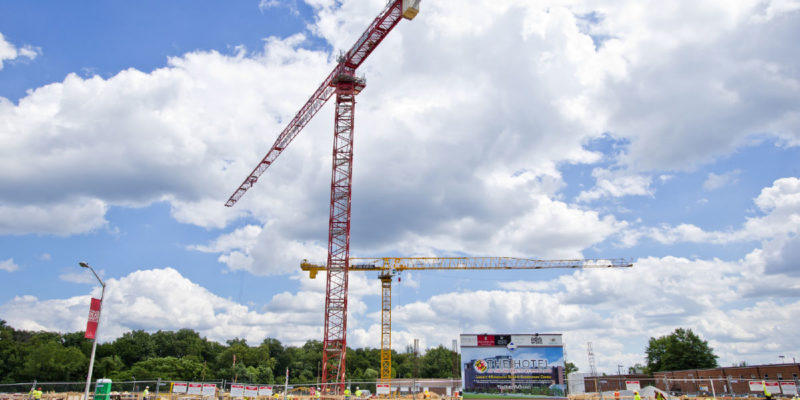
As university research parks change, the value of building relationships with outside partners has become more apparent. Rather than funding university-owned construction projects to further build out parks, a number of research park leaders are now focusing on partnering with private developers. LSU, for instance, currently owns several buildings but does not plan to build any more. “Our research park leadership at LSU is in the process of interviewing developers to take over the real estate management tasks, so that I can concentrate on recruiting new companies, as well as supporting the needs of existing companies,” D’Agostino says. “It is our priority to become more proactive in working with faculty and researchers on commercializing technology and creating companies that can form licensing agreements on university technology, with the goal of increasing royalty revenue and grants for research.”
While stand-alone office parks across the country are becoming more multi-market and mixed-use entities, research parks and the universities they serve are following suit, says Brian Darmody, associate vice president for corporate and foundation relations at the University of Maryland. For instance, at M Square, the University of Maryland Research Park, which was named AURP’s Outstanding Research Park for 2015 (see sidebar, “AURP Honors Excellence” for a list of earlier park recognitions), construction is currently underway on a new conference hotel, retail space, and housing units, through a partnership with a private developer. While the university will maintain ownership of the land, the private developer will own and lease the buildings under a long-term land lease. After the term of the lease is complete, the land and any improvements (including buildings) will revert back to the university.
Such agreements are common, particularly for residential housing (see “Debt Dynamics” in April 2015 Business Officer, for more on institutions using third-party developers for residential housing). Meanwhile, real estate developers and financing organizations are increasingly interested in working with universities to capitalize on the potential offered by cutting-edge research. Companies like Wexford Science and Technology and The University Financing Foundation (TUFF) work with institutions all over the country to develop parks capable of commercializing university research via private equity funds. For instance, when Georgia Tech wanted to build Tech Square, its state-of-the-art research facility for technology infrastructure systems, it worked with TUFF, which raised millions of dollars in capital and credit to accelerate the project in downtown Atlanta.
“The trend is that university research parks are moving to more joint-venture relationships with real estate developers so that park management can concentrate on commercialization and business support services for our faculty, researchers, students, and entrepreneurs that we recruit,” D’Agostino says. “Many of the parks do not have real estate expertise, nor can they afford hiring it, so it makes sense to work with professionals in the community.”
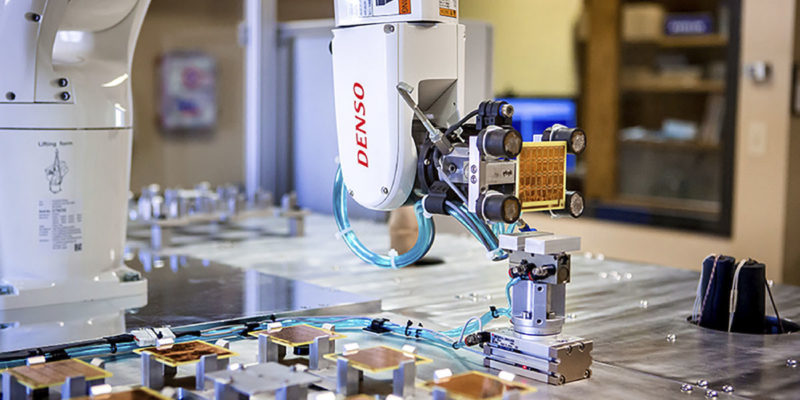
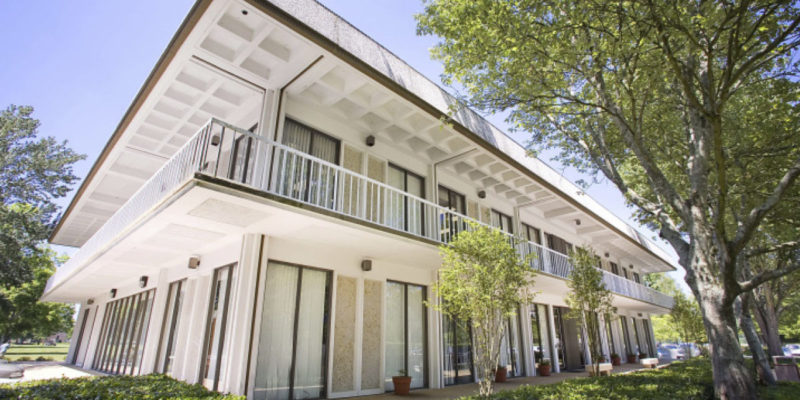
Partnering with industrial and corporate partners has become a vital component of research park success. LSU plans to host the 2017 conference of the University Industry Demonstration Partnership to showcase its own work in that area. LSU’s many partners include the following:
- Albemarle Corporation (LSU Innovation Park is the former Albemarle Research Facility, whose researchers are working with several companies at the park).
- The NASA Stennis Space Center, a federal lab where the LSU Innovation Park operates a full-time staff office to facilitate tech transfer to Louisiana companies and the university.
- The Committee of 100, representing the 100 largest corporations operating in Louisiana.
- Carver Scientific, specializing in energy storage and advanced materials.
- The Louisiana Association of Business and Industry.
- The National Council of Entrepreneurial Tech Transfer (NCET2).
- IBM.
- The Louisiana Industrial Development Executives Association.
- The Water Institute of the Gulf.
Upbeat Lifestyle Components
In 2014, the Brookings Institution released much-discussed research about the rise of “innovation districts,” or the move away from sprawling suburban business centers in favor of more walkable, urban centers that offer opportunities for housing and entertainment as well as jobs. While university research parks are distinctive from faceless industrial parks, many campus leaders feel the pressure to incorporate lifestyle components into their existing infrastructure in order to attract the entrepreneurs and top-level employees that lead to a park’s success.
For some, close proximity to the university can create the feel of an innovation district. “Proximity matters,” Darmody says. “Corporations are interested in being a part of innovation districts; they want a more holistic feel, where workers have places to go and interact, eat, and have housing nearby.”
At LSU, leaders are focusing on creating an innovation district across the eight miles that include the research park, the university, and downtown Baton Rouge. While the pieces are in place to create a “work, play, and live” district, university officials are working to further develop relationships with downtown business leaders and the mayor to build a stronger partnership and a more unified brand. And it’s a mutually beneficial relationship: While the downtown amenities make research park jobs more attractive, the availability of high-tech jobs close by helps fuel the downtown district.
“If our young people are going to stay in Baton Rouge, we have to have a walkable downtown—and we do, with about 40 restaurants and lots of condominiums,” D’Agostino says. “But the key is not the restaurants and bars; the key is the innovation of the university research and the jobs it brings.”
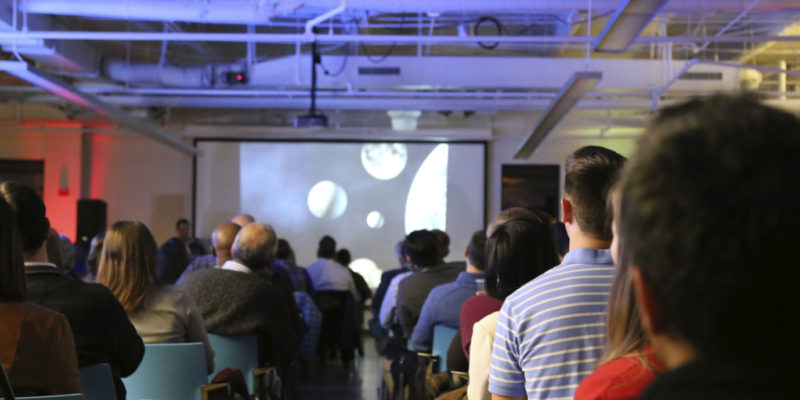
However, for the many university research parks that are not located in downtown or urban areas, it’s still possible to create a more urban feel. “The majority of university parks are suburban, not at the heart of a downtown district,” says Gregory Napier, director of the Purdue Research Park five-site network. “It’s hard to become something you’re not, but you can add elements to create a live-work-play environment. People are interested in placing their companies right next to a student workforce and university research, so it’s not necessary to scrap what you have. As we have grown our parks, we have witnessed a growth of restaurants, retail, service industries, walking and biking trails clustering around the startups, and established companies in our sites.”
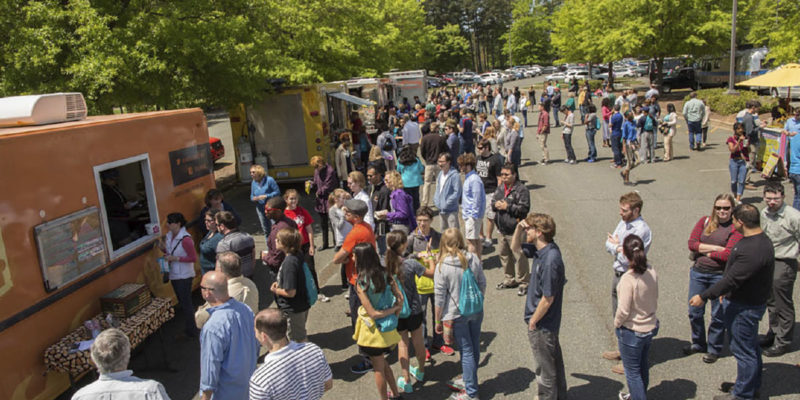
Another example is North Carolina’s Research Triangle Park (RTP), one of the original university research park successes, where a long history of severely limited suburban office space has made way for more flexible facilities. Park Center, a new mixed-use development in the middle of RTP, will offer 300,000 square feet of retail, hotels, multitenant office buildings, and a center at which the Triangle universities can convene. While the park’s own private, nonprofit foundation is leading the project, it is partnering with a professional development company as an adviser.
“Going forward, research parks have to have a greater diversity of spaces and diversity of tenants,” says Mason Ailstock, chief operating officer of the Research Triangle Park (located centrally between Raleigh, Durham, and Chapel Hill, N.C.). “Having a partner is important, but research park leadership must build communities that focus on inclusivity; flexibility; and interactions with local businesses, residents, and governments.”
Unique Strengths Rule
The fact that many university research parks are not located in downtown areas does not have to be a negative characteristic, Ailstock says. “New pressures and expectations for research parks have evolved over the past five years, including how to engage with innovation districts and urban redevelopment,” Ailstock says. “Suburban parks can feel intimidated by neighboring cities. Our park is not in a downtown area, but we’ve tried to see that as a strength.”
Central convergence. For instance, RTP is located between three universities and draws the expertise and research of all three. And although it’s located in a suburban area, the park has created a place that attracts people from nearby areas. “It’s key to create a place that’s all about inclusivity, pulling and inviting others in, and going into nearby cities and sharing the stories of the people and companies that are thriving here,” Ailstock says. “We want to create spaces that are fun to be in and bring down barriers between people and groups, inspiring people to engage with each other, whether they are students, faculty members, researchers, entrepreneurs, or community members.”
Recently, RTP redeveloped a centrally located building, transforming it into The Frontier, a unique gathering space with meeting rooms, free coffee, and WiFi available for anyone to use. “It’s an open, innovative space for the community where we blend art, culture, and technology, with university events and business events,” Ailstock says.
Programmed community activities, such as the Ted Talk–style “RTP 180,” are scheduled alongside university classes provided by North Carolina State University’s Center for Innovation Studies. IBM has also started making use of The Frontier with its Cloud Foundry Meetup groups; and Durham and Wake county school systems hold regular training sessions and meetings for area teachers. “It’s amazing what you discover when you remove barriers, invite folks who are brilliant and diverse—and then get out of their way,” Ailstock adds.
Startups and commercialization. Other university research parks are finding their own avenues for capitalizing on their inherent strengths. At LSU, in an effort to encourage more faculty members to commercialize their research and consider starting new companies, research park leaders have worked with university leaders to simplify the process of licensing and commercializing university research. “The university administration has embraced the role of LSU in economic development and is encouraging the entire university to participate in the city and state economic development process,” D’Agostino says.
Commitment from the top. Not only is it much easier than it once was to license and commercialize LSU-owned research, but the process is supported by the top university administration and lawyers, D’Agostino says. In addition, LSU is using university communications to highlight faculty members that have achieved patents, launched companies, or established licensing agreements to continue generating interest.
For instance, Enervana Technologies, located in LSU Innovation Park, licensed a metal-based microchannel cooling system for electronic devices from LSU’s department of mechanical engineering; and Esperance Pharmaceuticals Inc. is developing targeted anti-cancer drugs under a license from LSU’s AgCenter and Pennington Biomedical Research Center. LSU also has established the Leverage Innovation for Technology Transfer Fund, which provides funding for faculty research that has commercial potential. The LSU Innovation Park works with award winners on business plans, competition analysis, and grant development to commercialize their research.
Such a top-down commitment is crucial for ongoing progress, note all sources for this article. “Success is determined not only by the research park itself,” says University of Texas System’s Daniel, “but perhaps more importantly by the long-term commitment of a university to basic research, support of innovation, and maximizing the creative environment for our ingenious faculty and students. Perhaps the single greatest need is angel funding to bridge the ‘valley of death’ between ideas and commercial viability.”
Flexing Economic Muscles
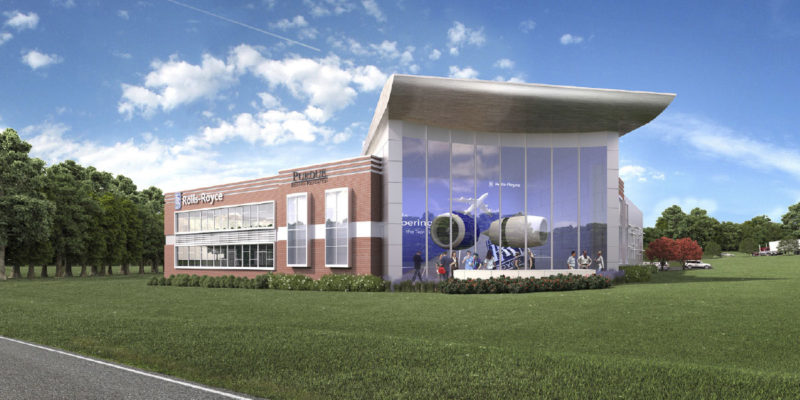
For many university research parks, economic development has been—or is becoming—a crucial part of the mission. And access to the latest research and development of leading research universities makes them fertile ground for new companies that will contribute to their local economies.
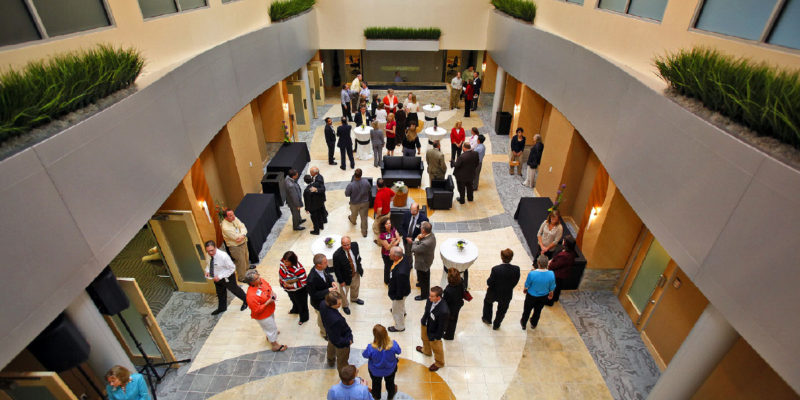
Purdue Research Foundation’s group of five research parks has developed expertise in launching new companies, especially with patented, university research. Last year, for instance, the foundation launched 49 new companies, 25 of them with intellectual property from Purdue University and with many of the startups located in the Purdue Research Park network. Although the university’s five parks are far-flung across the state of Indiana, with 200 miles between them, that presence in diverse communities has been a strong point for the system.
Overall, Purdue’s intellectual property has contributed to the creation of more than 100 startups in Indiana; most are located in the Purdue Research Park of West Lafayette, which is the largest university-affiliated business incubation complex in the country.
Among the startup companies are the following:
- Animated Dynamics Inc. is a life sciences startup that has raised more than $1 million in funding and staffs five employees. The company is developing a Purdue-patented commercial biodynamic camera to improve cancer therapeutics.
- Cook Biotech Inc. is a biomedical company that has sold its products in more than 50 countries around the world and employs about 170 staff. The company’s primary product aids in the area of tissue repair and is patented by Purdue.
- SensorHound LLC is an IT startup that has raised more than $1 million in venture funds and has eight full-time employees based in West Lafayette, Ind., and one consultant in Silicon Valley. The company is developing a Purdue-patented innovation that provides new ways to improve the security and reliability of endpoints in the Internet of Things.
- Spensa Technologies LLC is an ag precision startup that has raised $6.3 million in funding and has 28 employees. The company specializes in pest management technologies, including the Purdue-patented Z-Trap, which electronically tracks and controls insects.
- Spero Energy Inc. is an energy and chemical startup that has raised $1.4 million in funding and has five employees. The startup is commercializing a Purdue-patented technology to improve the efficiency of alternative fuel production and create high-value, renewable chemicals used in the flavor and fragrance industry.
“It can be challenging to make research parks work without proximity to the university, but we can do it through close partnerships with the university and the communities we work in,” says Purdue’s Napier. “As Indiana’s land grant university, commercializing innovations to help our global society and support economic development is an important cornerstone of our mission.”
Napier and his staff work to capitalize on the unique strengths of the individual community and focus on launching or bringing in new companies that are a fit. For instance, New Albany, Ind., was already home to the Purdue School of Polytechnics, so leaders brought that school into the research park located in New Albany to increase access to technology faculty and researchers. In Indianapolis, where aviation and the life sciences are important sectors of the economy, the Purdue Research Park has focused on those industries. “Each community has its own strengths, but what those communities don’t have is Purdue and the people creating this research, and that’s what we can supply,” Napier says.
In addition to capitalizing on the marketable research available on their campuses, university research parks have also found economic success by attracting outside companies and organizations that are interested in being a part of the university community. Sometimes, outside companies may choose to locate offices in the parks, or in other cases, they may simply want to be involved in other capacities, such as funding, networking, and education. “Our approach is to develop industrial partnerships with large economic engines in our community and bring them into the university to fund research and set up innovation centers at university research parks to get access to bright students, interns, graduates, new ideas, faculty, university research and university specialized equipment,” D’Agostino says. “It is LSU getting out of the university tower and opening up communications with industry and the local community.”
Focusing on People
Despite pressures to build partnerships and generate new revenue, university research parks are finding that going back to the basics—like working to bring in talented, motivated people rather than simply focusing on land, buildings, and company names—can yield results. “The way to build a better baseball team is not to get better baseballs; it’s to get great players and coaches, instill a winning attitude, get all the basics right, and deliver critical financial backing,” Daniel says. “Essentially the same is true of research parks: The real success of a park is not the park itself. It’s the combination of the people, a working environment that brings out the best in human creativity and collaboration, the fundamentals of outstanding research, and money in the right form at the right time directed toward the truly critical needs and objectives.”
At university research parks, some of the most important players are the highly talented graduate students that cutting-edge parks can attract. Top-notch graduate student researchers are in demand by both universities and innovative companies, and by coming together in a research park environment, both can benefit. “Student researchers are brilliant talent that a company can test drive, and then determine who they want to hire,” says RTP’s Ailstock. “They also provide companies with insights into the type of talent that universities can provide.”
The ability to bring in the best and brightest student researchers is vital to the operation and success of a university research park. “They are not afraid to ask questions and are often extremely knowledgeable about cutting-edge areas in their fields of study,” Ailstock says. “They bring a new perspective to the research park environment, tremendous enthusiasm for their work, and challenge the status quo—often unknowingly.”
Sought-after student researchers are attracted to dynamic university research parks because of the potential jobs that might be offered after graduation, along with opportunities for students to pursue their own research and to engage with private sector leaders in their fields, Ailstock says.
Some parks have refocused their marketing efforts to tell the stories of the individuals—student researchers and others—who populate their buildings. For instance, rather than focusing on the corporations that have chosen to locate at RTP, the park is moving toward marketing strategies that tell the stories of the individuals who work and innovate there. “For so long, research parks have been known by logos—what companies are in your park and which universities are represented,” says RTP’s Ailstock. “But I want to know about Barbara who works at Cisco on some new technology that’s saving lives. We want to leverage the identity and convening power of Research Triangle Park by telling what individuals like Barbara are doing there.”
RTP continues to leverage success by telling such stories through marketing materials, community events, and other avenues. The effectiveness of the best university research parks is “not driven by real estate and lease numbers,” Ailstock says. “It’s driven by the people who use it and what they’re doing there. We can build a $100 million building, but what makes it awesome are the people working there and achieving tangible outcomes.” (To read stories about RTP researchers and their work, go to www.rtp.org/blog.)
Many university research parks are accepting the challenges presented by increased competition and tighter budgets. And the struggle is likely to be ongoing: As global competitors show no sign of letting up, U.S. universities will have to stay on the cutting edge of research, development, and commercialization in order to remain competitive. “Our great research universities develop tech transfer facilities to incubate commercially viable ideas with laudable intentions to positively impact the world and the university’s bottom line; and success in these objectives varies widely,” says the University of Texas System’s Daniel. “We often consider our journey complete when we have walked a few hundred feet down this path of tech transfer but, to have a real impact in an intensely competitive global environment, we need to walk a mile. We under-scope what it will take to win consistently. My greatest worry is complacency with what we have.”
NANCY MANN JACKSON, Huntsville, Ala., covers higher education business issues for Business Officer.



